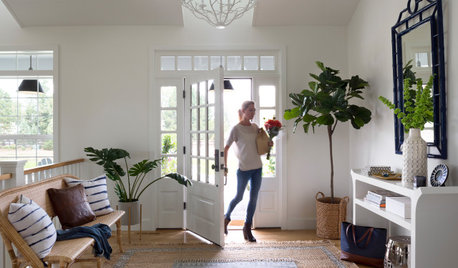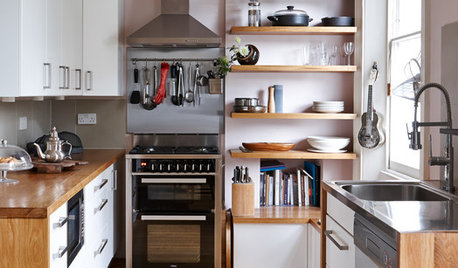Planning a small orchard; seeking advice
Fleeben
11 years ago
Related Stories

KITCHEN DESIGNSmart Investments in Kitchen Cabinetry — a Realtor's Advice
Get expert info on what cabinet features are worth the money, for both you and potential buyers of your home
Full Story
BATHROOM DESIGNDreaming of a Spa Tub at Home? Read This Pro Advice First
Before you float away on visions of jets and bubbles and the steamiest water around, consider these very real spa tub issues
Full Story
HOUSEKEEPING7-Day Plan: Get a Spotless, Beautifully Organized Entry Hall
Take your entry from scuffed up to spiffed up — restoring total cleanliness and order in just a week
Full Story
FALL GARDENINGMake This Fall’s Garden the Best Ever
Learn the most important tip for preventing buyer’s remorse, plus get more valuable buying and planting advice
Full Story
REMODELING GUIDES6 Steps to Planning a Successful Building Project
Put in time on the front end to ensure that your home will match your vision in the end
Full Story
FEEL-GOOD HOMESimple Pleasures: Plan a Rejuvenating Retreat at Home
Crave a quiet day or a weekend devoted to yoga? Design a mini retreat without going anywhere
Full Story
GARDENING GUIDESHow to Switch to an Organic Landscape Plan
Ditch the chemicals for a naturally beautiful lawn and garden, using living fertilizers and other nontoxic treatments
Full Story
DECORATING GUIDESAsk an Expert: How to Decorate a Small Spare Room
It can be difficult to know what to do with that tiny extra room. These design pros offer suggestions
Full Story
MOST POPULAR99 Ingenious Ideas to Steal for Your Small Kitchen
Make the most of your kitchen space with these storage tricks and decor ideas
Full Story
LIVING ROOMSHow to Decorate a Small Living Room
Arrange your compact living room to get the comfort, seating and style you need
Full StoryMore Discussions






blazeaglory
planatus
Related Professionals
Fillmore Landscape Architects & Landscape Designers · North New Hyde Park Landscape Architects & Landscape Designers · Suffern Landscape Architects & Landscape Designers · Wheeling Landscape Architects & Landscape Designers · Bethlehem Landscape Contractors · Blue Springs Landscape Contractors · Canby Landscape Contractors · Choctaw Landscape Contractors · Mahwah Landscape Contractors · McLean Landscape Contractors · North Lauderdale Landscape Contractors · North Richland Hills Landscape Contractors · Saint Paul Landscape Contractors · San Rafael Landscape Contractors · Wayland Landscape ContractorsScott F Smith
Scott F Smith
FleebenOriginal Author
Noogy